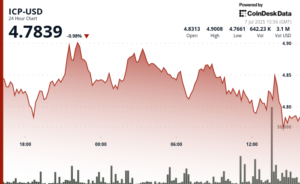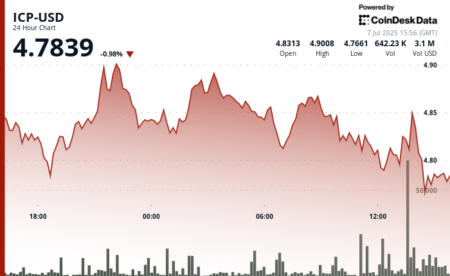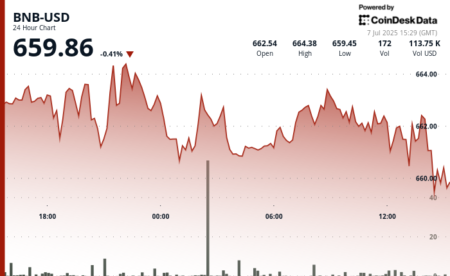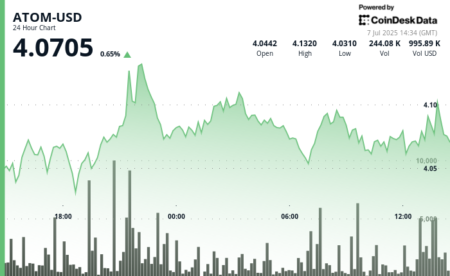Coinbase Hacker Resurfaces: The Growing Threat to Ethereum Security
The cryptocurrency landscape has evolved dramatically over the past decade, with its market cap soaring to over $3.3 trillion. As the industry flourishes, however, it faces mounting risks and vulnerabilities, particularly from malicious hackers who exploit weaknesses for financial gain. Ethereum (ETH), one of the leading cryptocurrencies, has emerged as a frequent target for such attacks. A recent incident involving a hacker linked to Coinbase highlights the ongoing threats within the ecosystem and raises concerns about the security of digital assets.
Resurfacing of the Coinbase Hacker
An exploitative wallet associated with a Coinbase security breach has resurfaced, making headlines by purchasing 4,863 ETH for a staggering $12.5 million using DAI. Reported by Onchain Lens, the hacker acquired Ethereum at a price of $2,569 per token. Despite this massive influx of ETH, the hacker still holds approximately $45.36 million in DAI across two wallets. This indicates a strategic move towards further investments in Ethereum, potentially to capitalize on future price gains or to complicate tracking of stolen funds. This is not the hacker’s first foray; just two months prior, the same wallet executed a significant transaction, converting 26,347 ETH into DAI for $68.18 million.
Ethereum’s Status as a Hacker’s Favorite
Despite Ethereum’s robust technology and widespread adoption, it has become a frequent target for hackers. A recent report from SlowMist underscores the vulnerabilities within Ethereum, revealing it suffered security incidents leading to total losses of $38.9 million in 2025 alone. Notably, 84.45% of all ETH transitioned to Bitcoin through the THORChain network, a pathway often connected with hacks. Furthermore, a staggering 5,900 stolen ETH remains on the Ethereum network, scattered across 12,490 different wallets. This alarming situation reveals significant security failures not just within exchanges, but also in the broader Ethereum ecosystem.
High-Profile Attacks: The Lazarus Group Incident
Among the most notable security breaches in recent times was the Lazarus Group attack, which resulted in the theft of around 500,000 ETH, valued at approximately $1.46 billion, from Bybit. Following this monumental heist, the group employed tactics to obscure their tracks by dispersing stolen assets across multiple wallets. This ongoing series of attacks highlights a glaring vulnerability within the Ethereum blockchain, raising alarms for both exchanges and individual investors. With numerous wallets still harboring looted assets, the integrity of the ecosystem seems compromised, presenting a dire concern for all stakeholders involved.
Market Sentiment Amid Security Issues
Despite these troubling revelations, Ethereum has not seen a collapse in demand. The latest figures show fluctuations in net inflows, with a noted drop to -$900 million on July 7, contrasting sharply with earlier neutral or positive trends. Such rapid outflows may signal panic among investors or profit-taking activities, yet they could also serve as precursors to potential price rebounds if selling pressure alleviates. As of the last reports, Ethereum was trading around $2,573—indicating a 2.3% daily uptick—suggesting that if positive news emerges, ETH could continue to gain traction in the market.
Looking Ahead: Price Projections and Market Dynamics
The outlook for Ethereum remains cautiously optimistic, albeit shaken by security concerns. Market analysts indicate that unless there are compelling bullish catalysts, ETH is likely to trade within a range of $2,400 to $2,600 in the near term. Should the sentiment shift positively, resistance level estimates suggest that Ethereum could potentially navigate up to around $2,780. The cryptocurrency landscape is inherently volatile, and investor reactions to news and market changes will heavily influence ETH’s trajectory moving forward.
Conclusion: Vigilance in the Face of Cyber Threats
The rise in cyberattacks against Ethereum underscores the need for enhanced security protocols and vigilance in the cryptocurrency space. As hackers adapt and evolve their strategies, stakeholders across the industry—exchanges, developers, and investors—must remain on guard against potential vulnerabilities. By increasing awareness and prioritizing security, the cryptocurrency community can mitigate risks and foster a safer environment for digital asset investments. In the evolving world of crypto, dual-focused strategies on innovation and security are essential for sustaining growth and safeguarding assets.

















